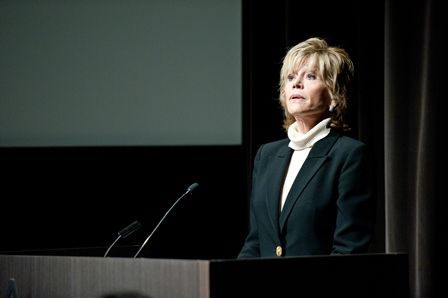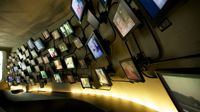Jane Fonda urges remembrance of sexual violence during the Holocaust
Actress, activist speaks at international symposium convened by USC Shoah Foundation and Remember the Women Institute


The Institute invites you to a lecture by Dr. Sean Field, Director of the University of Cape Town’s Centre for Popular Memory, which documents the oral histories of refugees, victims of violence and displacement, and others who suffered under apartheid and its legacy. Dr. Field will evaluate the outcomes of various methodologies oral history researchers have used to preserve memories of apartheid; his lecture will take place this Thursday, November 15 at 6:00 pm, in the Ronald Tutor Campus Center, Room 227.
A historic international symposium on sexual violence during the Holocaust took place on November 7–8, 2012, convened by USC Shoah Foundation–The Institute for Visual History and Education, and Remember the Women Institute. The approximately 20 academics and activists who participated have all worked on this issue, which has been overlooked by most historians for nearly 70 years. A highlight of the two-day symposium was a public event with Oscar-winning actress Jane Fonda on November 8, also co-
Graduates of the Institute’s Master Teacher Program will debut IWitness next week at the 2012 National Council for the Social Studies (NCSS) Annual Conference, demonstrating how the award-winning website, now in beta, weaves together digital literacy development, online citizenship, and tolerance education based on the life stories of Holocaust survivors and other witnesses.
When the Institute sent teams around the world to gather video testimony from survivors and eyewitnesses of the Holocaust, more than 2,500 Australians came forward. Nearly 20 years later, the Institute is once again in Australia; this time, the focus is on students.
In partnership with Education Services Australia Limited (ESA), the Institute is exploring the possibility of integrating its award-winning website IWitness (currently in beta) into the Australian national curriculum. About IWitness

In the Czech Republic, Holocaust survivors’ eyewitness testimonies will soon be used to teach a different aspect of local history: the imprisonment of Czechoslovak citizens in the Soviet Gulag.
In July, the USC Shoah Foundation Institute held a follow-up workshop for graduates of the 2011 Master Teacher Program. Participants reconvened as a professional practice- and learning-community after using testimony in the classroom during the past school year. More
Album posted on: September 7, 2012
Az összesen 20 videó-interjúból álló felületen a látogatók az egyes túlélők élettörténeteit láthatják. A vetített felület két szélén érzékelő kamerákat helyeztek el, melyek az indítási pontra álló látogató irányító kézmozdulatát érzékelve kinagyítják a látogató által kiválasztott videót és hanggal együtt lejátszanak egy néhány perces részletet az interjúból. Az kiválasztott interjú meghatározott helyről, egy látogató által "indítható", de a kiemelt részletet a többi jelen lévő látogató nézheti, hallgathatja.